✨You Can Touch the Times Square New Year's Eve Ball!
Find out how you can take home a piece of the old New Year's Eve ball!


One time we wrote about all the manholes inside Westminster Abbey, London (amazingly, there are over 50). New York City also has an amazing array of manholes and after our recent discovery of a Flickr group dedicated to the city’s manholes, we thought we’d highlight some of the most unique ones. Manhole covers were once a part of a town’s civic pride, with foundries and local authorities placing their stamp on the cast-iron covers. Covers were a reflection of the progress made through the industrial revolution and the new provision of services that accompanied increasing urbanization. Many of the manholes specify Con Edison or Bell, a reflection of the move to put the city’s electrical wires underground after the great blizzard of 1888.
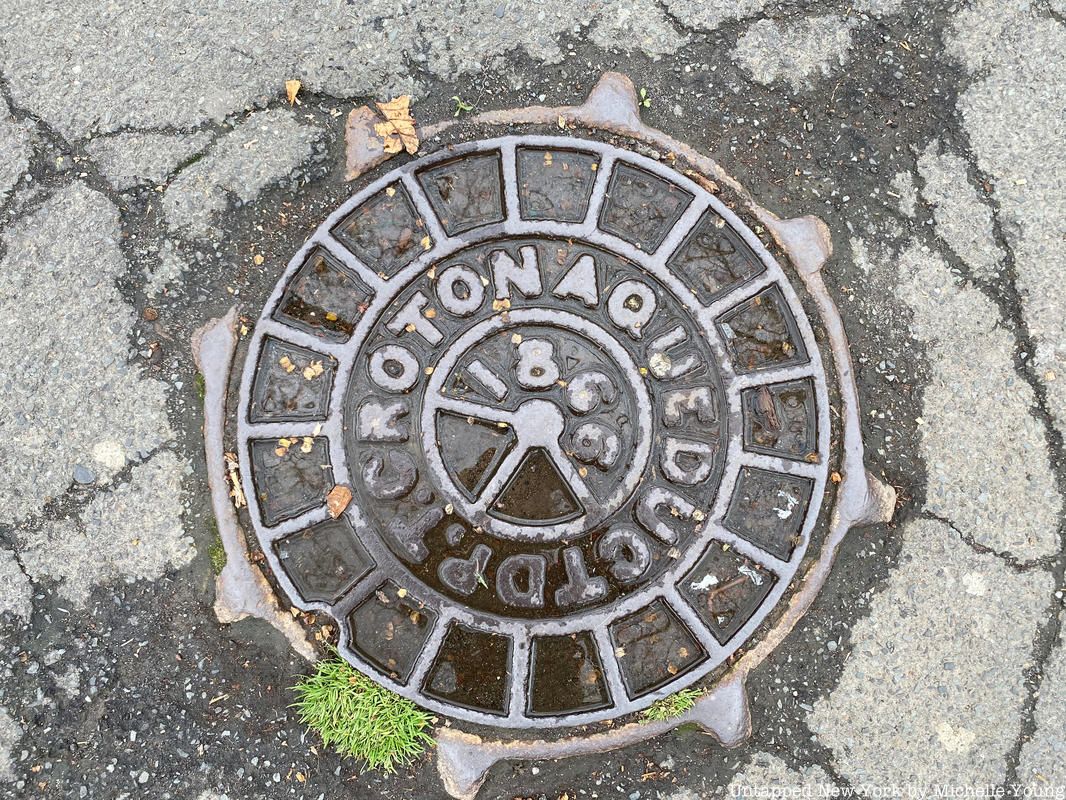
In Thomas Jefferson Park, along the walkway off 112th Street and 1st Avenue, the Croton Aqueduct manhole, dating from 1866 — is one of the oldest manholes in New York City. Another is located at 40th Street and 8th Avenue, and one was formerly next to the Puck Building on Jersey Street before the street was paved over. The oldest we are aware of so far dates from 1861 and is located in Central Park. These manholes were part of the Croton Aqueduct system, which had a distributing reservoir at what is now the site of the New York Public Library. There are some remnants of the system you can still see in the library and other places throughout New York City.
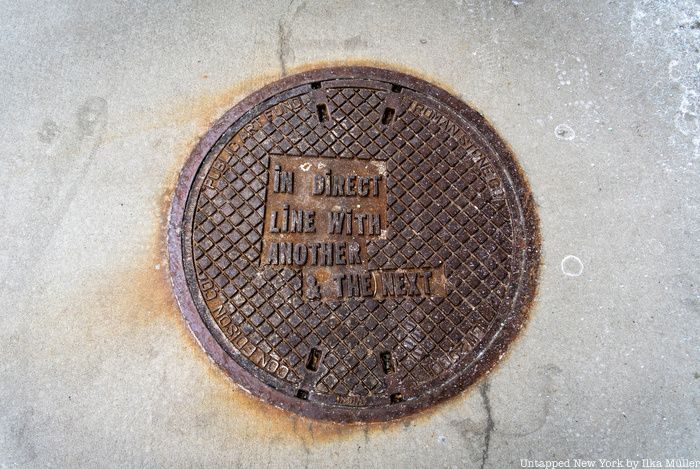
There are 19 of these manholes by Lawrence Weiner, a project with the Public Art Fund installed in 2000. They were originally found in the West Village, Washington Square area, Union Square area and Astor Place area. Today, one of the last ones is part of a permanent installation on the steps of the Whitney Museum of Art.
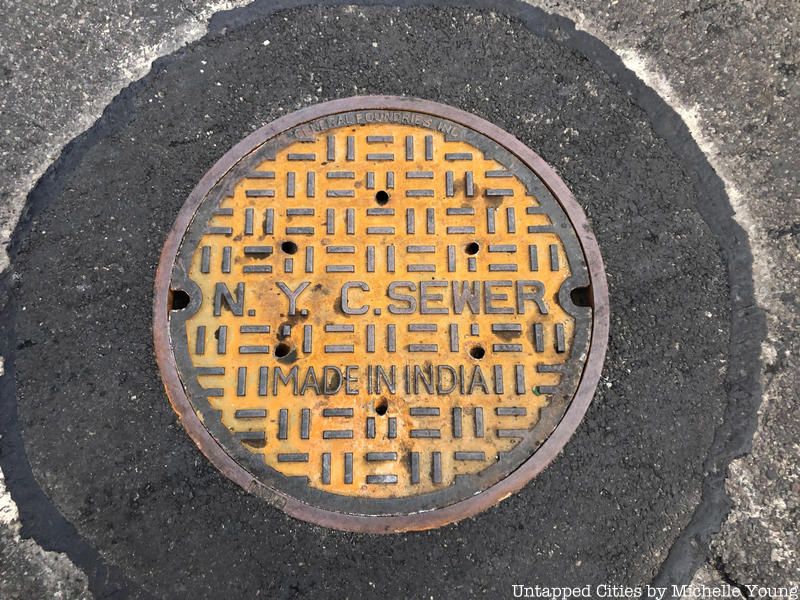
This is the classic NYC Sewer manhole. Many now also say their country of origin, often India. You may also catch some great street art playing with this design, like this frying pan with sunny side up eggs sizzling in the East Village. Many are made in India, which was the subject of a 2015 documentary.
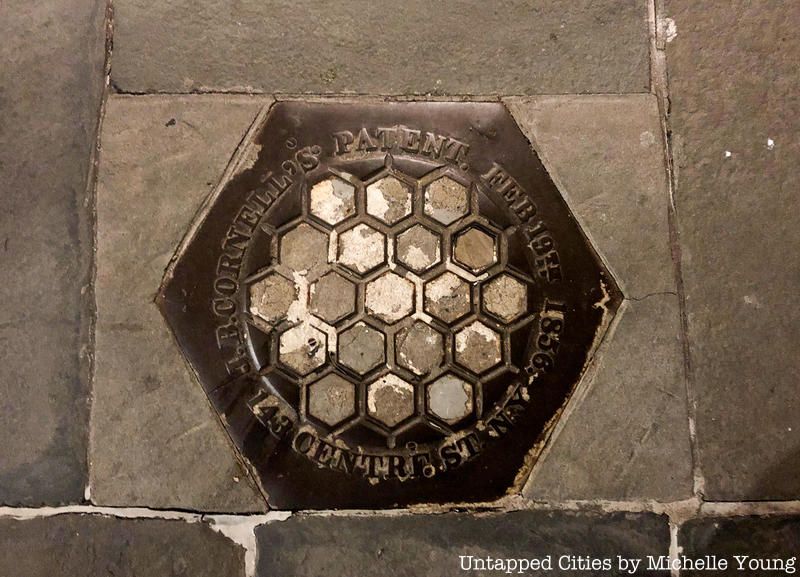
Like in London, the original street covers were for coal–and were often originally rectangular in shape. New York City still has many covers that lead to former coal chutes, like the one above in a hexagonal shape. This particular one, found in Brooklyn Heights, is a patented “illuminated cover” invented by J.B. Cornell, an ironworks company founded by brothers on Centre Street.
The patent document from 1856 describes glass panes placed between melted brimstone. John B. Cornell writes that the design will be kept clean from the “friction of passing feet,” and that a light rain shower would remove “any considerable quantity of dirt” from the glass panes. For this and various reasons, Cornell believed “in point of illuminating power, and safety against the entrance of moisture, I believe that my improved illuminating cover for openings in pavements &c. has no equal.”
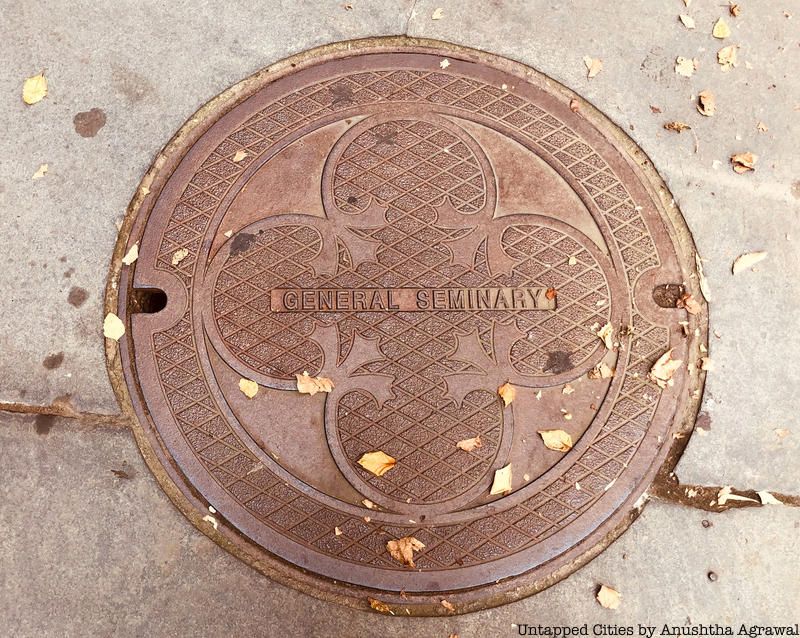
In Chelsea, one large block houses the General Theological Seminary built by the Episcopal Church in the neo-Gothic style. It has its own manhole covers, fitting with the general architecture of the site.
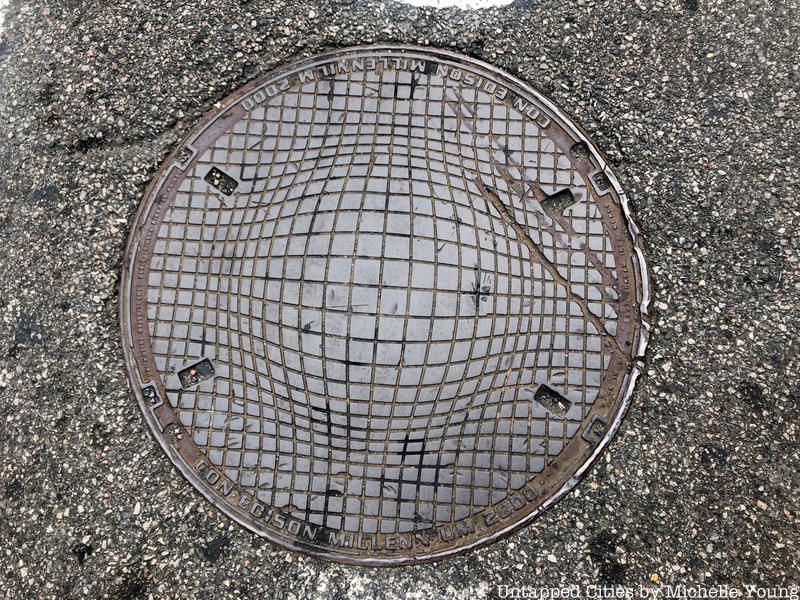
In 2000, Con Edison sponsored a competition for a manhole cover celebrating the new millennium. Artist Karim Rashid won the competition, with the first of these manholes installed in front of the recruiting station in Times Square. Said Rashid of the design “This is the perfect medium to express the message that energy and information, flowing in a super-highway beneath our feet, are making the world a smaller place. The morphing of the grid shows how the potential and importance of this vital link is growing.”
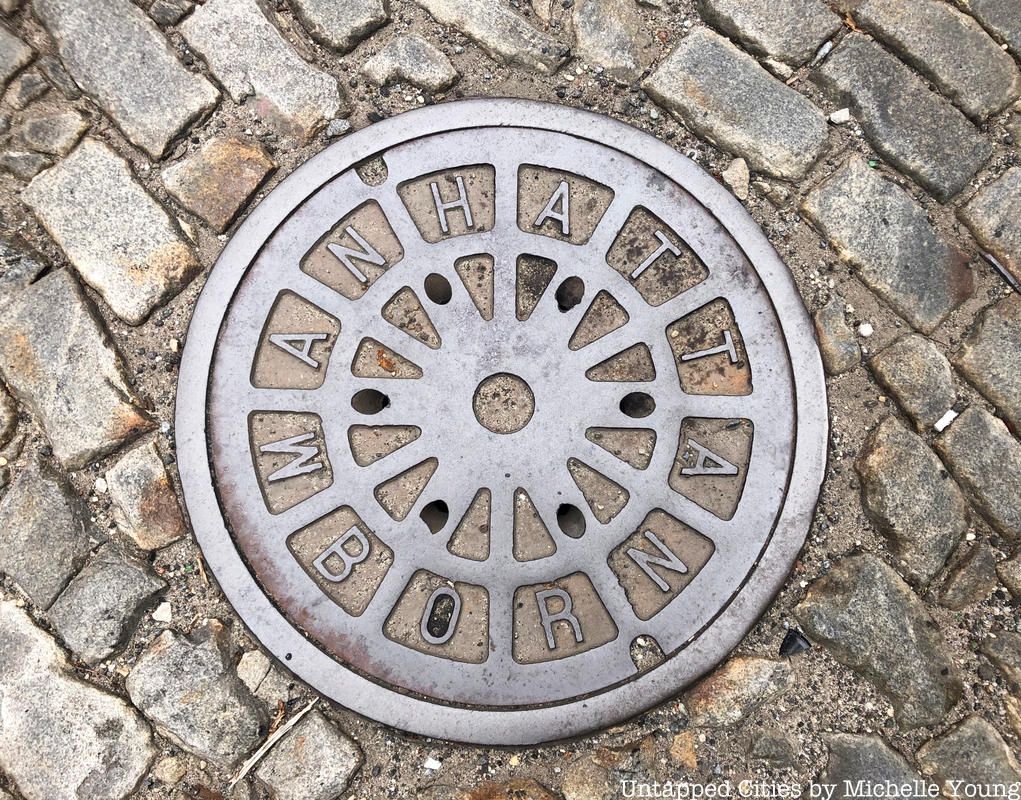
The “N” between Manhattan and Born are shared. There isn’t too much information about this, though there is a copyright registrant to a Benjy Kyle for use of “ManhattanBor” on apparel, print and on the internet, with a specific image of the manhole cover. Perhaps this manhole in Sugar Hill is an example of clever guerrilla advertising? We’ve also spotted similar ones with different lettering MANHATTAN DPW, for example. Regardless, it does highlight the fact that many manholes are made out of the country, as we mentioned.
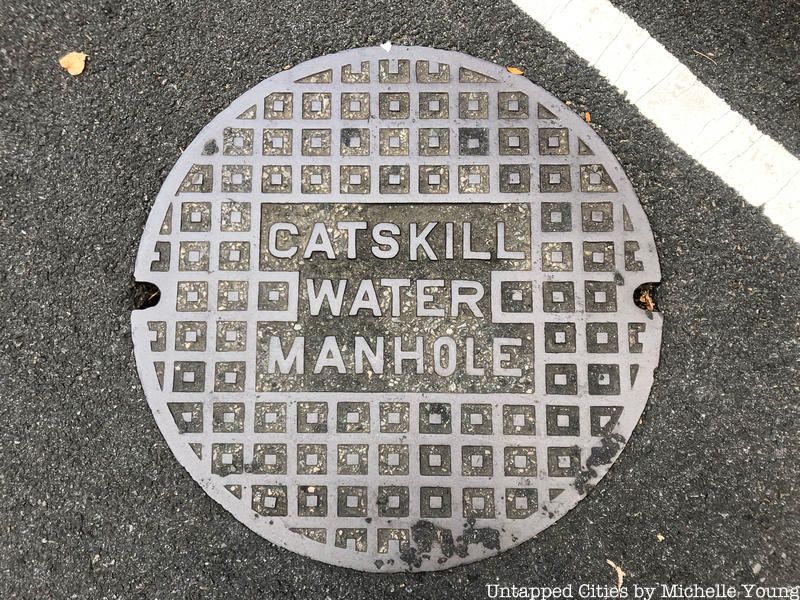
The Catskill Water Manhole cover, which we found in Prospect Heights, Brooklyn, refers to the aqueduct system (one of three in New York City) that brings fresh drinking water to the city. Built in 1915, the Catskill Aqueduct still brings water from the Catskills mountain down to Yonkers, where it is then distributed to places in New York City.
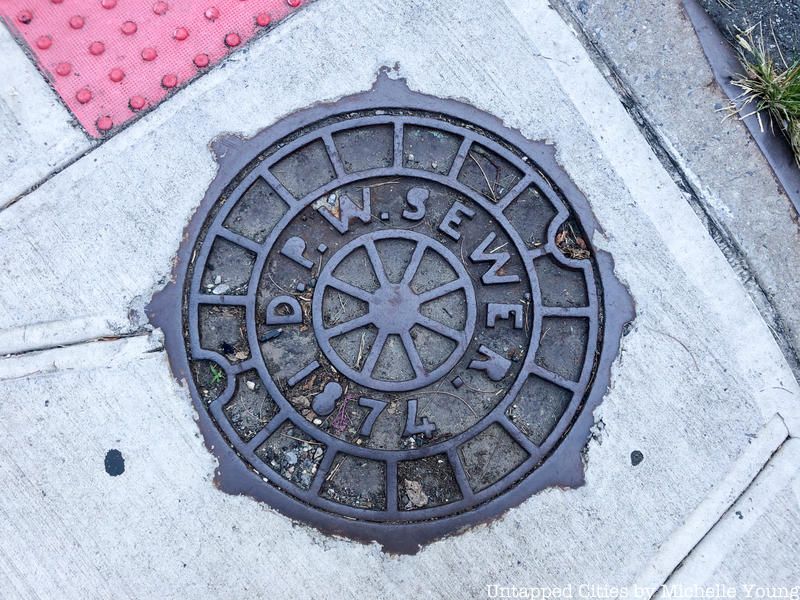
This DPW Sewer manhole located on Amsterdam Avenue near Columbia University has a date, 1874. It’s not as old as the Croton Aqueduct manhole but it’s one of the few that still have the date on it. DPW stands for Department of Public Works
There’s even a whole book about NYC’s manhole covers for those with more interest in the aesthetics of the objects.
Subscribe to our newsletter